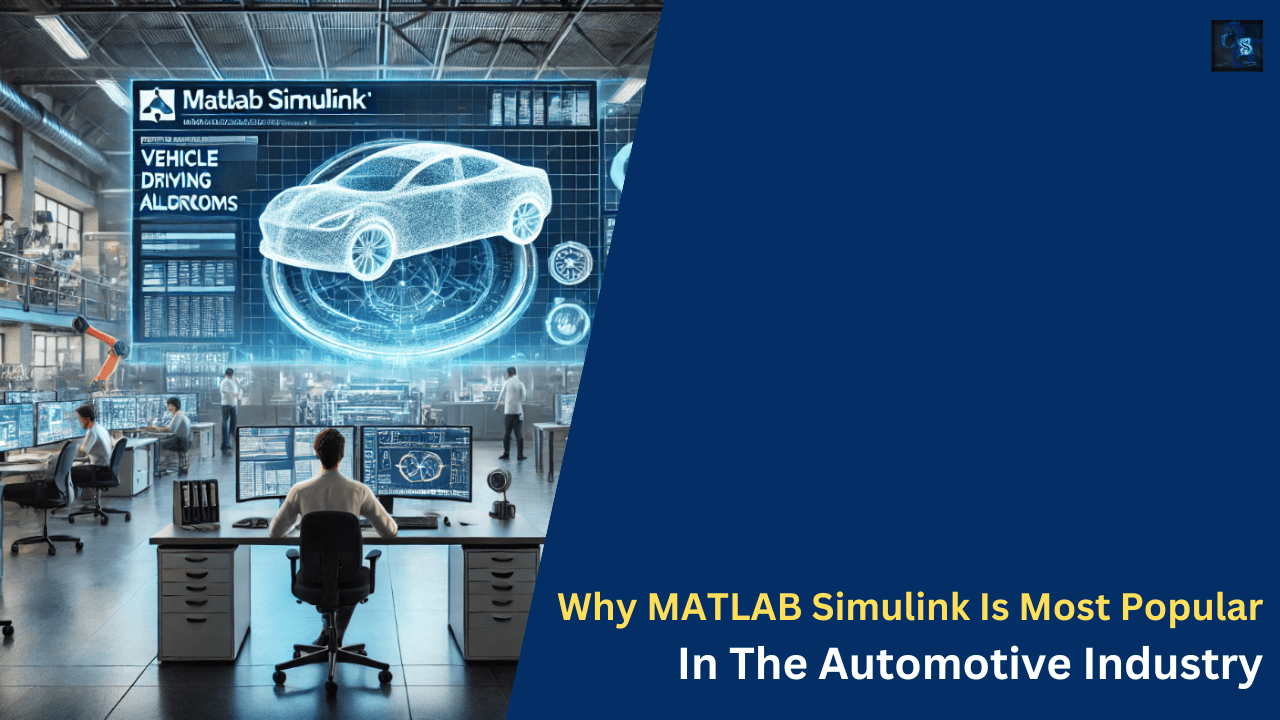Why MATLAB Simulink Is Most Popular In The Automotive Industry
Hello guys, welcome back to our blog. Here in this article, we will discuss why MATLAB Simulink is most popular in the Automotive Industry, and its capabilities, advantages, and real-world applications.
Ask questions if you have any electrical, electronics, or computer science doubts. You can also catch me on Instagram – CS Electrical & Electronics
- How FuSa ASIL Levels Are Assigned With 100+ Real World Examples
- Automotive Cybersecurity Standards: UNECE WP.29 & ISO/SAE 21434
- Why PMSM And BLDC Motors Are Very Popular In Electric Vehicles
Why MATLAB Simulink Is Most Popular
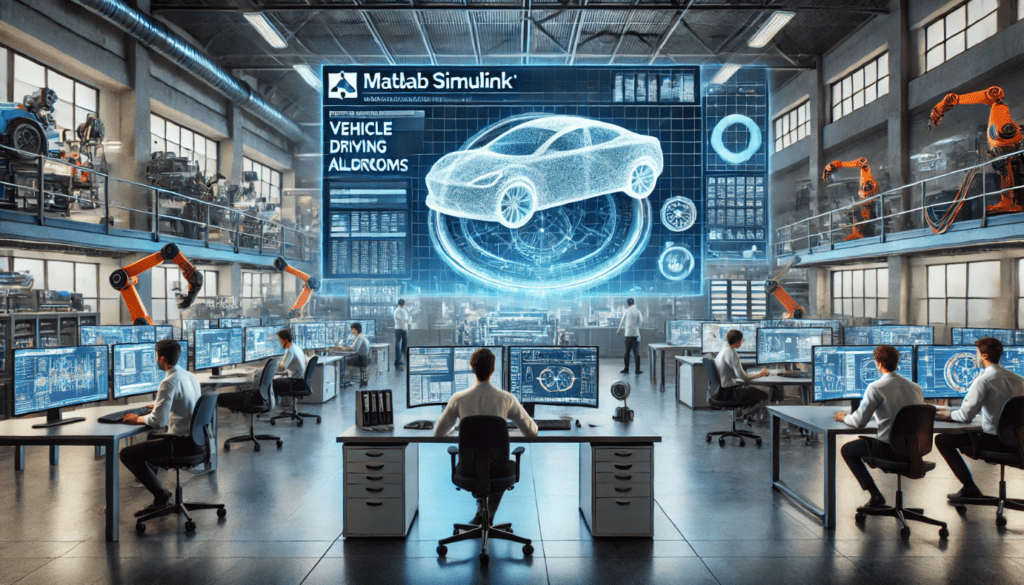
The automotive industry has witnessed remarkable advancements over the years, with increasing reliance on software and model-based design methodologies. Among the numerous tools available, MATLAB Simulink stands out as the most widely used platform for automotive system modeling, simulation, and control design. This article explores why MATLAB Simulink is the preferred choice in the automotive sector, discussing its capabilities, advantages, and real-world applications.
01. Model-Based Design (MBD)
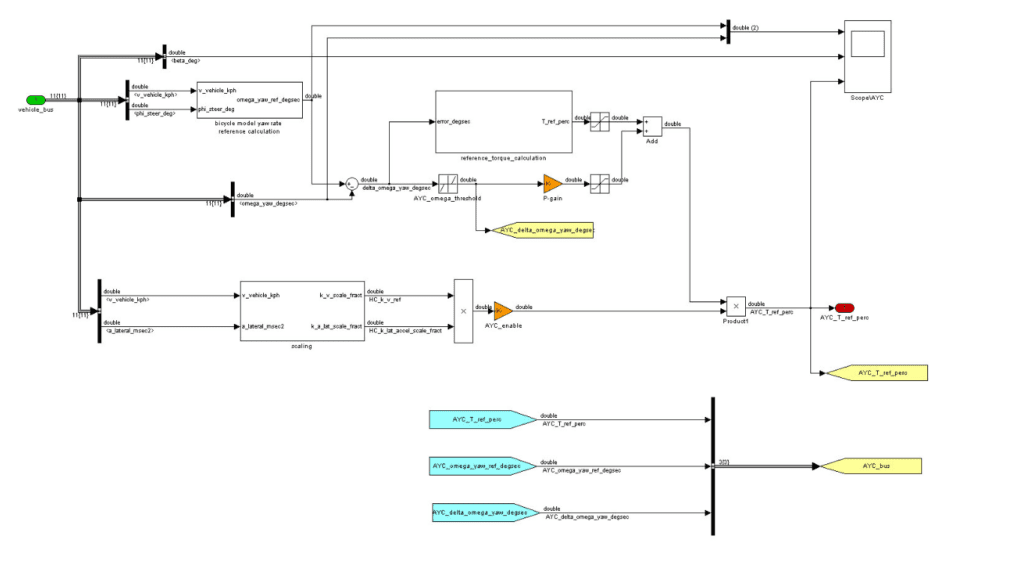
Model-Based Design (MBD) has become a fundamental approach in the automotive industry, allowing engineers to develop, test, and validate control algorithms in a virtual environment before hardware implementation. MATLAB Simulink supports MBD by providing a graphical, block-based modeling environment, enabling:
- Rapid prototyping of automotive control systems
- Continuous and discrete-time simulations
- Automatic code generation for embedded systems
- Verification and validation using simulation models
By using Simulink, automotive engineers can reduce development costs and accelerate time to market by identifying design flaws early in the process.
02. Integration with Automotive Standards and Protocols
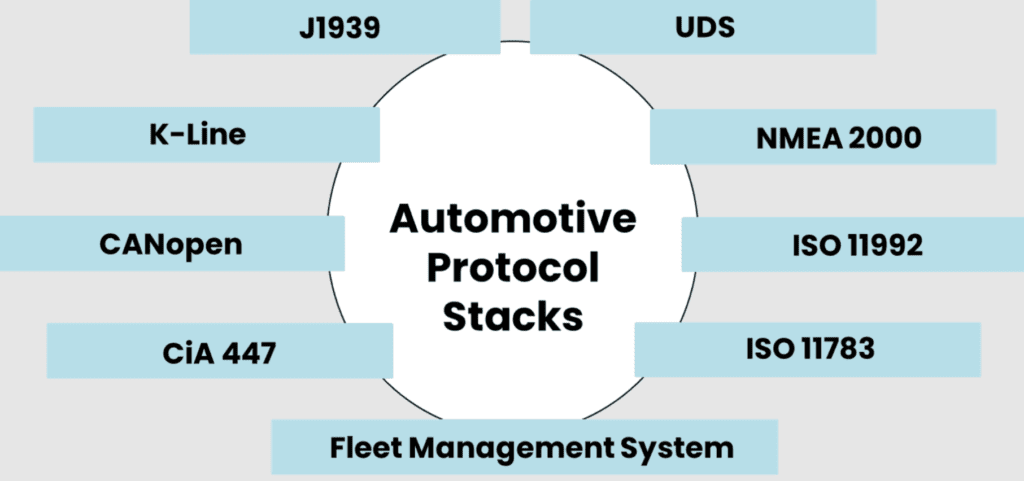
Modern vehicles incorporate complex electronic control units (ECUs) and communication networks. MATLAB Simulink supports various industry standards and communication protocols such as:
- AUTOSAR (Automotive Open System Architecture): Simulink facilitates seamless integration with AUTOSAR, allowing automotive companies to develop modular and reusable software components.
- CAN (Controller Area Network) & LIN (Local Interconnect Network): Simulink provides built-in support for simulating and analyzing CAN and LIN communication, which is crucial for vehicle networking.
- UDS (Unified Diagnostic Services): Simulink helps in implementing and testing diagnostic protocols in automotive electronic systems.
- ISO 26262 Compliance: Safety-critical automotive applications require adherence to ISO 26262. MATLAB Simulink provides toolboxes for functional safety analysis and model verification, ensuring compliance with regulatory standards.
03. Efficient Algorithm Development and Code Generation
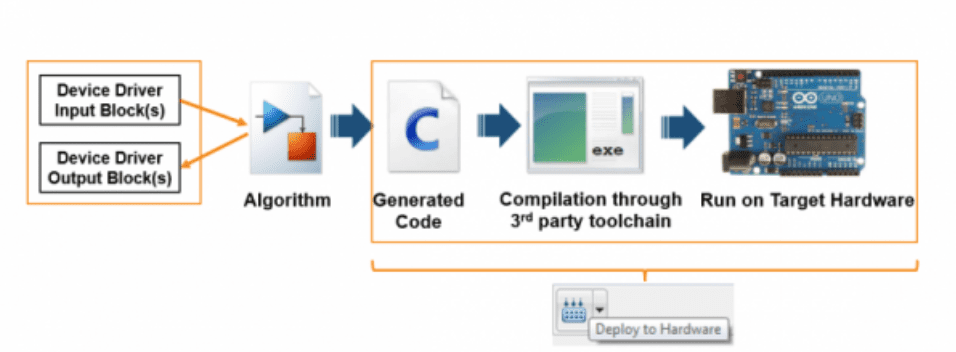
One of the key reasons for MATLAB Simulink’s popularity in the automotive industry is its ability to translate graphical models into optimized code for embedded systems. The following features make this process efficient:
- Embedded Coder: Generates high-quality C and C++ code from Simulink models, reducing manual coding efforts.
- Simulink Coder: Enables rapid prototyping by converting models into real-time executable code.
- HDL Coder: Generates VHDL/Verilog code for FPGA-based automotive applications.
- Automatic Code Verification: Reduces errors by allowing software-in-the-loop (SiL) and hardware-in-the-loop (HiL) testing, ensuring reliability before deployment.
04. Advanced Simulation and Testing Capabilities
MATLAB Simulink offers advanced simulation features essential for automotive system testing:
- Hardware-in-the-Loop (HiL) Simulation: Enables real-time testing of ECUs with simulated vehicle dynamics.
- Software-in-the-Loop (SiL) and Processor-in-the-Loop (PiL) Testing: Helps validate software before deploying it onto the final hardware.
- Digital Twin and Virtual Vehicle Prototyping: Allows engineers to create a digital replica of a physical system for in-depth analysis.
- Scenario-Based Testing for ADAS & Autonomous Vehicles: Simulink provides simulation environments to test Advanced Driver Assistance Systems (ADAS) and autonomous driving algorithms.
05. Comprehensive Support for Powertrain and Electrification
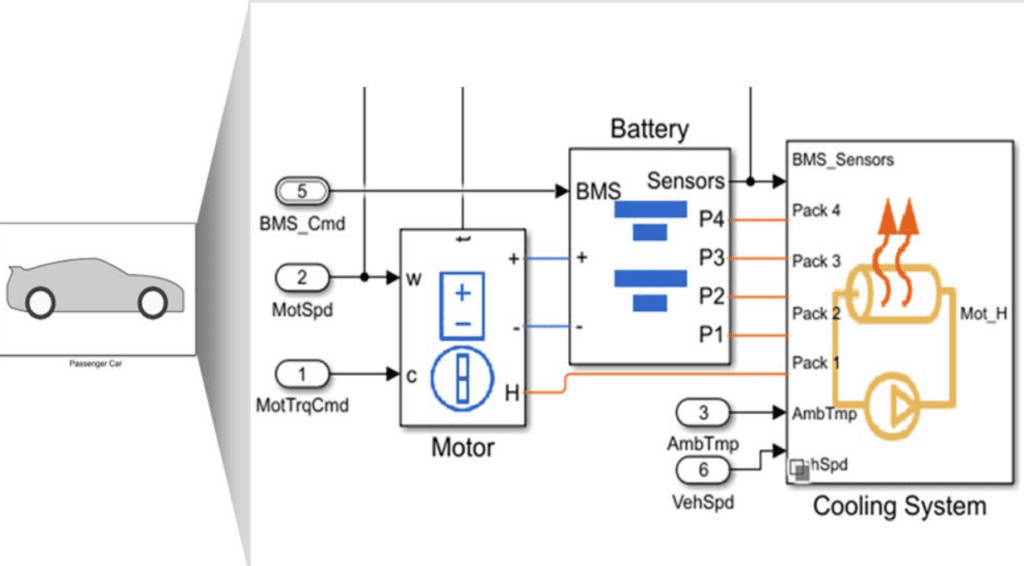
As the automotive industry shifts towards electric vehicles (EVs) and hybrid electric vehicles (HEVs), MATLAB Simulink has adapted to meet these new demands. Some of its notable features include:
- Battery Management System (BMS) Modeling: Helps design, simulate, and optimize battery thermal management and state-of-charge estimation.
- Motor Control Algorithms: Provides tools to develop and simulate motor controllers for electric powertrains.
- Energy Efficiency Analysis: Allows for system-level simulation of fuel efficiency, power distribution, and regenerative braking.
- Charging System Development: Supports simulation and optimization of wireless and wired EV charging systems.
06. Support for ADAS and Autonomous Vehicle Development

The development of ADAS and autonomous driving technologies heavily relies on simulation-based validation due to the complexity of real-world testing. MATLAB Simulink provides:
- Sensor Fusion Algorithms: Combines data from radar, LiDAR, cameras, and other sensors.
- Path Planning and Control: Offers built-in functions for trajectory planning and vehicle control.
- Scenario-Based Testing: Provides realistic driving scenarios to test algorithms in a safe, controlled environment.
- Deep Learning and AI Integration: Supports AI-based perception systems using MATLAB’s deep learning toolboxes.
07. Scalability and Collaboration
MATLAB Simulink facilitates teamwork across large engineering teams and multiple departments. Key features that enhance collaboration include:
- Cloud-Based Simulations: Enables remote access to models and simulations.
- Version Control Integration: Supports Git and other version control systems for collaborative development.
- Multi-Domain Simulation: Integrates mechanical, electrical, and software components in a single platform.
- Toolchain Interoperability: Works seamlessly with tools like dSPACE, Vector CANoe, and IBM Rational DOORS.
08. Extensive Industry Adoption and Ecosystem
MATLAB Simulink is widely adopted across the automotive industry, including by major OEMs (Original Equipment Manufacturers) and Tier 1 suppliers. Its strong ecosystem includes:
- A Large User Community: Engineers and researchers share solutions, best practices, and tutorials.
- Support from MathWorks: Comprehensive documentation, technical support, and regular updates.
- Integration with Third-Party Tools: Compatibility with other engineering tools enhances workflow efficiency.
09. Future Trends and Role of MATLAB Simulink
The automotive industry is evolving rapidly, with new challenges and technological advancements. MATLAB Simulink continues to adapt by incorporating:
- Artificial Intelligence (AI) and Machine Learning (ML): Enhances predictive maintenance and intelligent decision-making.
- Edge Computing for Automotive Applications: Supports real-time data processing on embedded platforms.
- Digital Twin Technology: Creates virtual replicas of physical automotive systems for predictive analytics.
- 5G and V2X Communication: Helps in developing vehicle-to-everything (V2X) communication systems for connected cars.
Conclusion
MATLAB Simulink has established itself as the leading platform in the automotive industry due to its powerful simulation, modeling, and code generation capabilities. Its ability to integrate with industry standards, support advanced testing methodologies, and enable the development of next-generation automotive technologies makes it indispensable for engineers and researchers. As the industry transitions towards electric, autonomous, and connected vehicles, MATLAB Simulink will continue to play a pivotal role in shaping the future of automotive engineering.
This was about “Why MATLAB Simulink Is Most Popular In The Automotive Industry“. Thank you for reading.
Also, read:
- 100 (AI) Artificial Intelligence Applications In The Automotive Industry
- 2024 Is About To End, Let’s Recall Electric Vehicles Launched In 2024
- 50 Advanced Level Interview Questions On CAPL Scripting
- 7 Ways EV Batteries Stay Safe From Thermal Runaway
- 8 Reasons Why EVs Can’t Fully Replace ICE Vehicles in India
- A Complete Guide To FlexRay Automotive Protocol
- Adaptive AUTOSAR Vs Classic AUTOSAR: Which One For Future Vehicles?
- Advanced Driver Assistance Systems (ADAS): How To Become An Expert In This Growing Field

